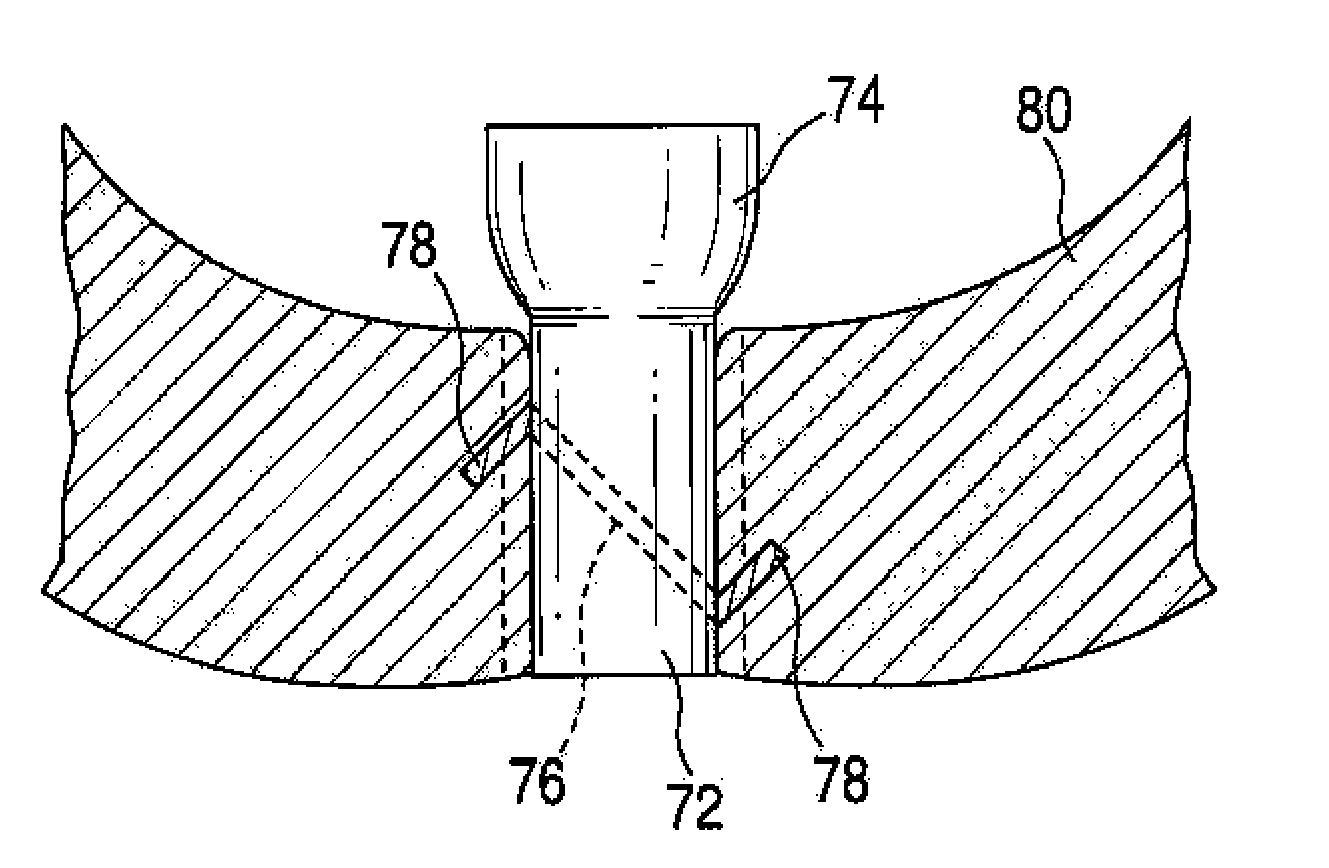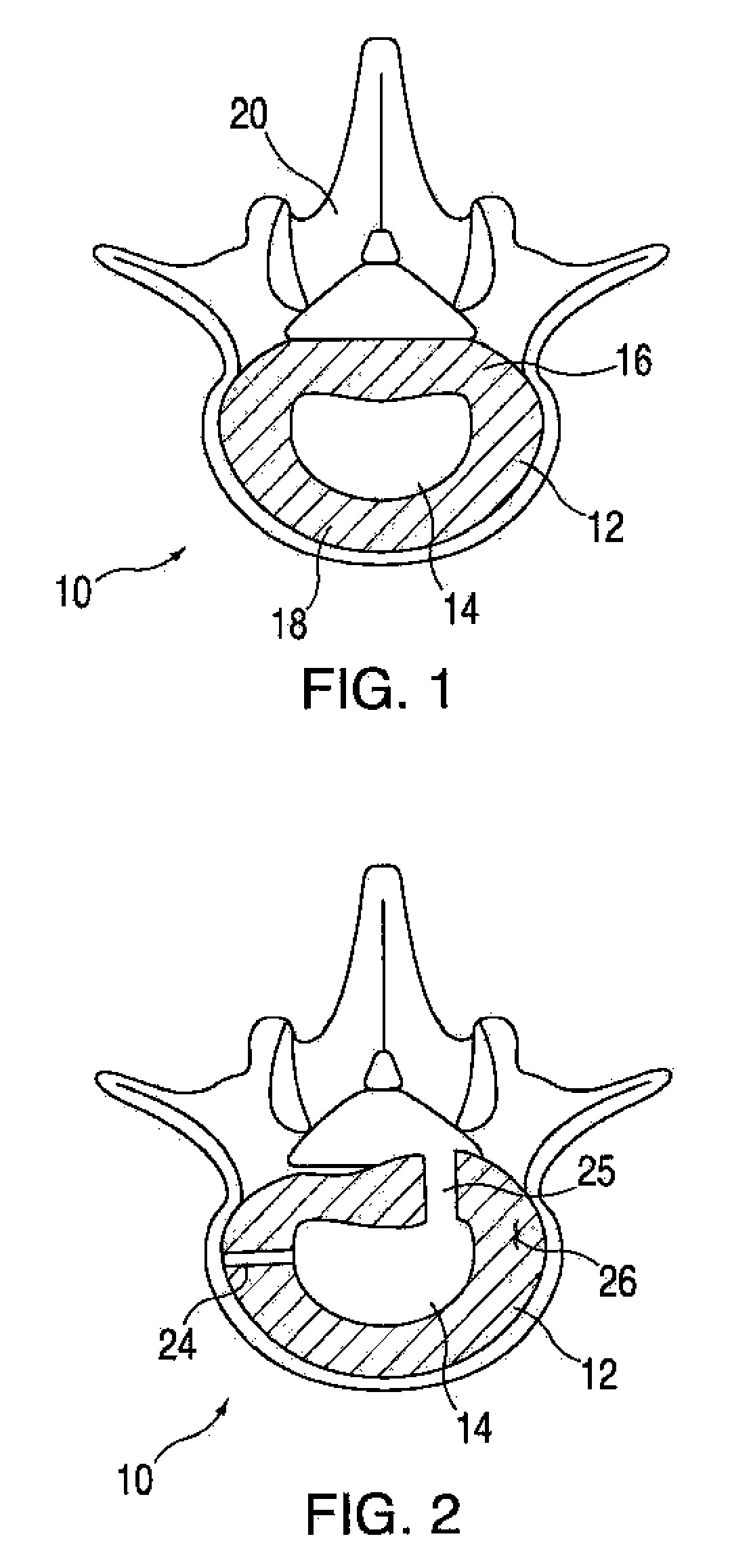Repair of spinal annular defects
a technology of annular defects and spinal cord, applied in the field of spinal cord annular defect repair, can solve the problems of back pain, most common and often debilitating conditions affecting millions of people, back pain, etc., and achieve the effects of reducing the need for subsequent surgery or treatment, reducing the chronic irritation of local nerve roots, and stabilizing the nuclear portion
- Summary
- Abstract
- Description
- Claims
- Application Information
AI Technical Summary
Benefits of technology
Problems solved by technology
Method used
Image
Examples
example 1
Fabrication of a Cross-Linked Reticulated Polyurethane Matrix
[0325] Aromatic isocyanates, RUBINATE 9258 (from Huntsman; comprising a mixture of 4,4′-MDI and 2,4′-MDI), were used as the isocyanate component. RUBINATE 9258 contains about 68% by weight 4,4′-MDI, about 32% by weight 2,4′-MDI and has an isocyanate functionality of about 2.33 and is a liquid at 25° C. A polyol-1,6-hexamethylene carbonate (PC 1733, Stahl Chemicals) i.e., a diol, with a molecular weight of about 1,000 Daltons, was used as the polyol component and is a solid at 25° C. Glycerol was the chain extender, and water was used as the blowing agent. The blowing catalyst were tertiary amine 33% triethylenediamine in dipropylene glycol (DABCO 33LV supplied by Air Products) and Niax-A1 (supplied by Air Products). A silicone-based surfactant was used (TEGOSTAB® BF 2370, supplied by Goldschmidt). The cell-opener was ORTEGOL® 501 (supplied by Goldschmidt). A viscosity depressant (Propylene carbonate supplied by Sigma-Aldr...
example 2
Fabrication of a Cross-Linked Reticulated Polyurethane Matrix
[0335] Aromatic isocyanates, RUBINATE 9258 (from Huntsman; comprising a mixture of 4,4′-MDI and 2,4′-MDI), were used as the isocyanate component. RUBINATE 9258 contains about 68% by weight 4,4′-MDI, about 32% by weight 2,4′-MDI and has an isocyanate functionality of about 2.33 and is a liquid at 25° C. A polyol-1,6-hexamethylene carbonate (Desmophen LS 2391, Bayer Polymers), i.e., a diol, with a molecular weight of about 2,000 Daltons, was used as the polyol component and is a solid at 25° C. Water was used as the blowing agent. The blowing catalyst was the tertiary amine 33% triethylenediamine in dipropylene glycol (DABCO 33LV supplied by Air Products). A silicone-based surfactant was used (TEGOSTAB® BF 2370, supplied by Goldschmidt). The cell-opener was ORTEGOL® 501 (supplied by Goldschmidt). A viscosity depressant (Propylene carbonate supplied by Sigma-Aldrich) was also used. The proportions of the components that were...
example 3
Fabrication of a Crosslinked Polyurethane Matrix
[0350] The aromatic isocyanate RUBINATE 9258 (from Huntsman) was used as the isocyanate component. RUBINATE 9258, which is a liquid at 25° C., contains 4,4′-MDI and 2,4′-MDI and has an isocyanate functionality of about 2.33. A diol, poly(1,6-hexanecarbonate)diol (POLY-CD CD220 from Arch Chemicals) with a molecular weight of about 2,000 Daltons was used as the polyol component and was a solid at 25° C. Distilled water was used as the blowing agent. The blowing catalyst used was the tertiary amine triethylenediamine (33% in dipropylene glycol; DABCO 33LV from Air Products). A silicone-based surfactant was used (TEGOSTAB® BF 2370 from Goldschmidt). A cell-opener was used (ORTEGOL® 501 from Goldschmidt). The viscosity modifier propylene carbonate (from Sigma-Aldrich) was present to reduce the viscosity. The proportions of the components that were used are set forth in the following table:
TABLE 3IngredientParts by WeightPolyol Component1...
PUM
| Property | Measurement | Unit |
|---|---|---|
| diameter | aaaaa | aaaaa |
| diameter | aaaaa | aaaaa |
| diameter | aaaaa | aaaaa |
Abstract
Description
Claims
Application Information
 Login to View More
Login to View More - R&D
- Intellectual Property
- Life Sciences
- Materials
- Tech Scout
- Unparalleled Data Quality
- Higher Quality Content
- 60% Fewer Hallucinations
Browse by: Latest US Patents, China's latest patents, Technical Efficacy Thesaurus, Application Domain, Technology Topic, Popular Technical Reports.
© 2025 PatSnap. All rights reserved.Legal|Privacy policy|Modern Slavery Act Transparency Statement|Sitemap|About US| Contact US: help@patsnap.com



